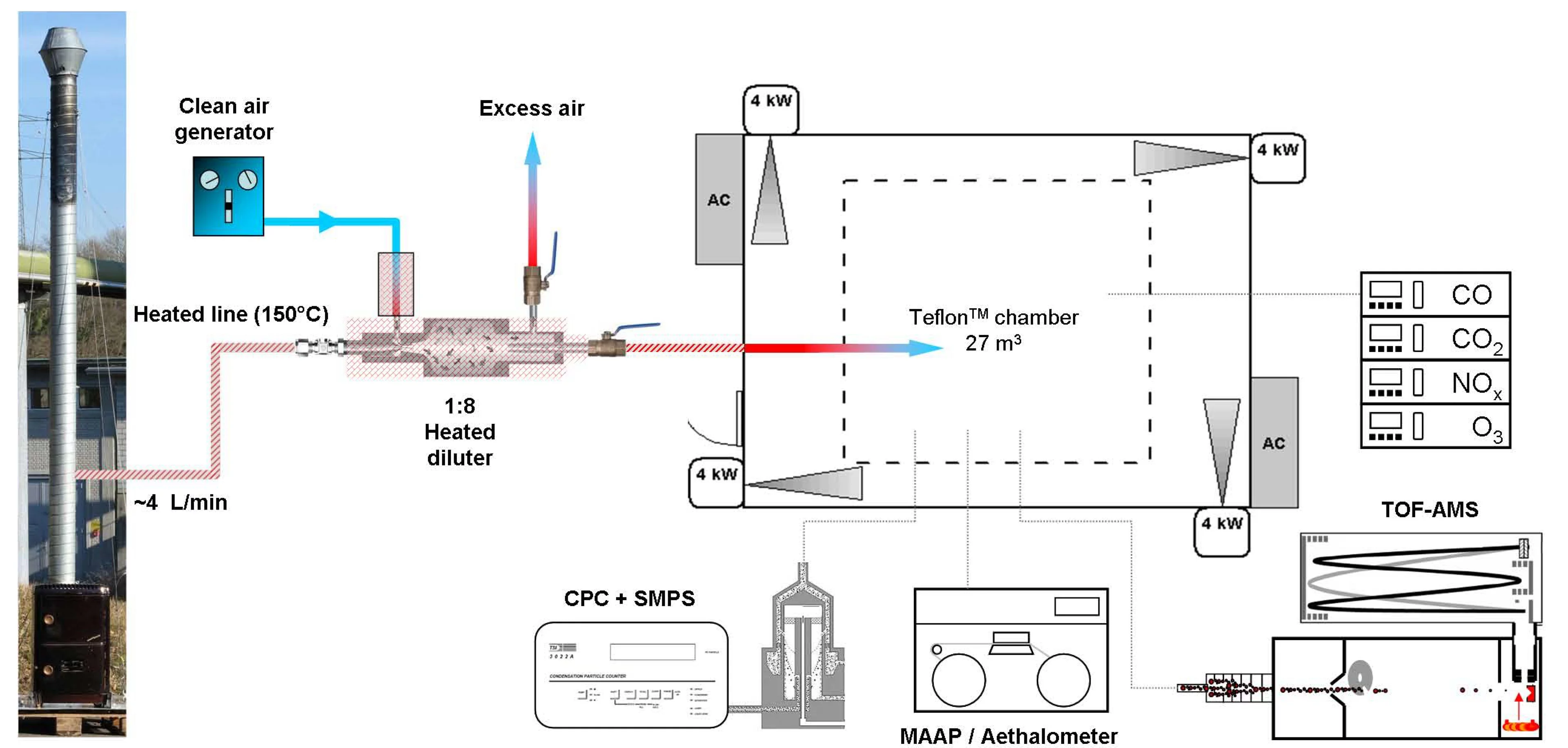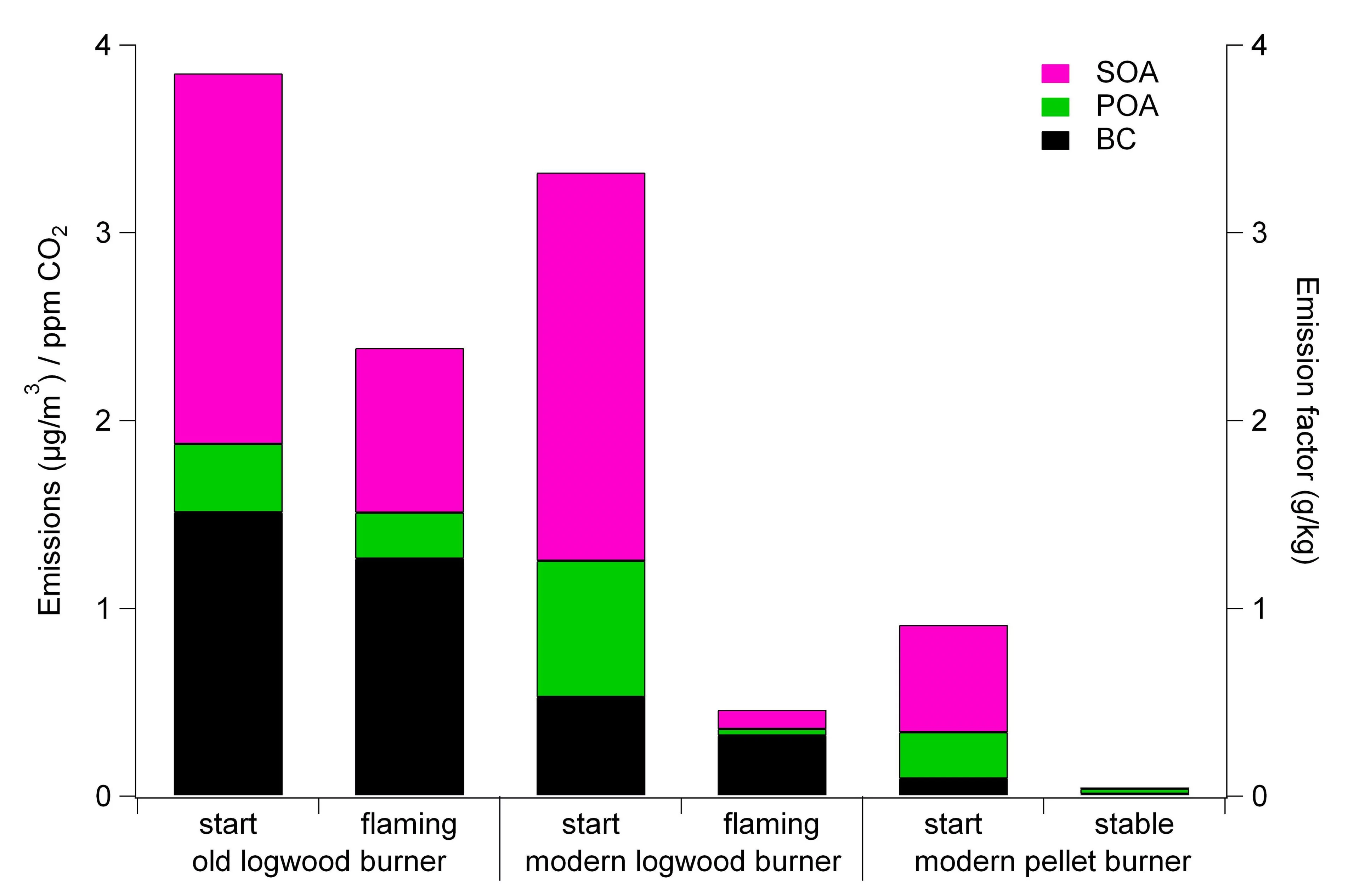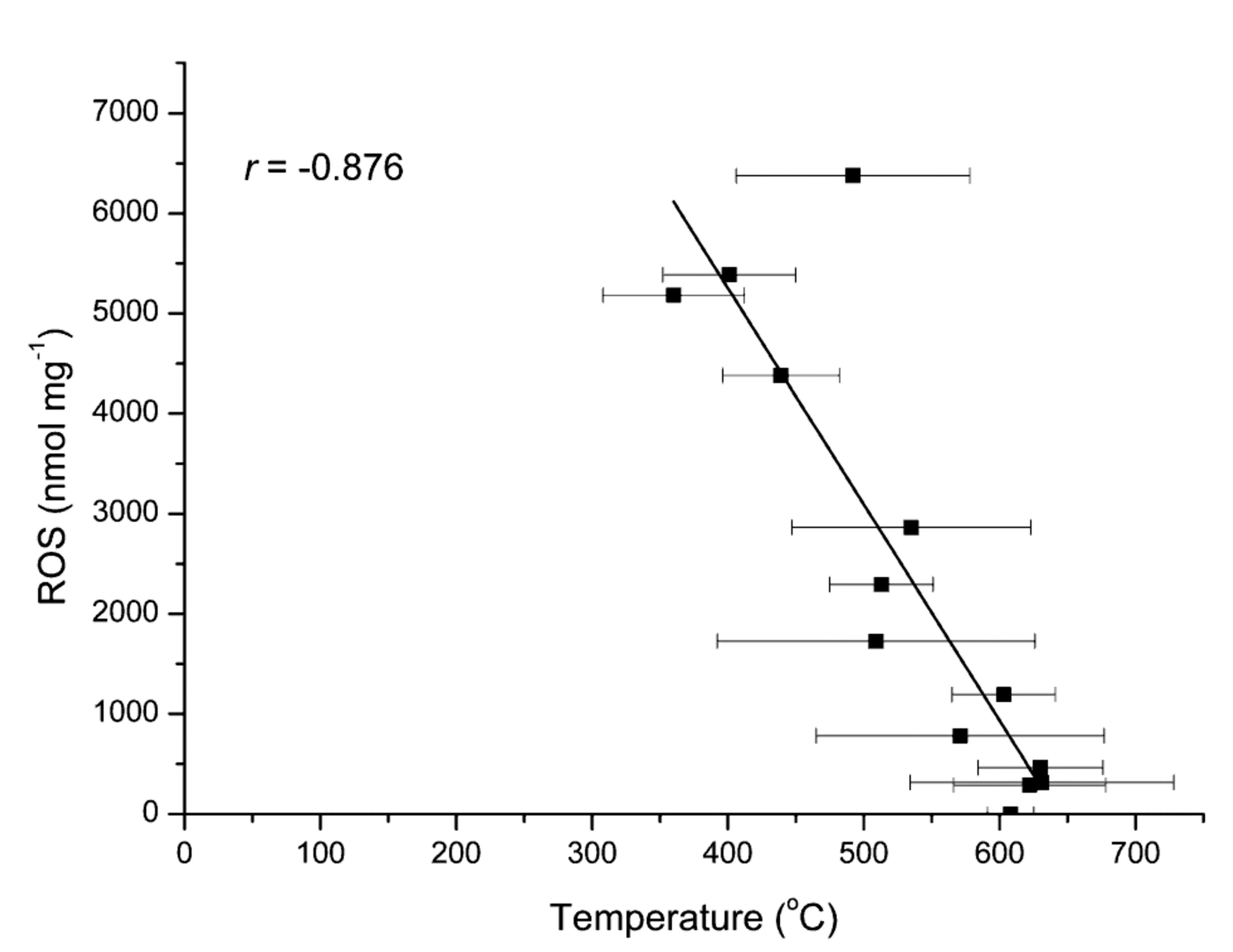Scope of project
The goal of the project was to characterize and quantify the primary emissions and the secondary formation potential of logwood and pellet ovens. In addition, the influence on health was approximated for primary emissions by reactive oxygen species (ROS).
Key findings
- Pellet ovens emit during stable burning conditions much less soot and organic mass than a logwood burner and no significant secondary organic aerosol (SOA) is found from pellet stable burning conditions (Heringa et al., 2011a).
- The emission factors including secondary aerosol formation were in the ragne of 0.04 to 3.9 g/kg aerosol mass/burnt wood for the stable burning pellet burner and old log wood burner during startup respectively (Heringa et al., 2011a)
- SOA from wood burning contribute significantly to m/z60 of the aerosol mass spectra, a commonly used marker for primary emissions of wood burning (Heringa et al., 2011a)
- The SOA to POA ratio of logwood burner emissions was on average 3.1 after 5 hours aging, while this ratio was 2.3 for pellet starting phase emissions (Heringa et al., 2011a)
- In a modern logwood burner, the POA and SOA emissions were significantly reduced compared to an old logwood burner during the flaming phase (Heringa et al., 2011a)
- The SOA from a logwood burner can be distinguished from scooter, diesel, and alpha-pinene SOA using PCA analyses of pure gasphase smogchamber experiments (Heringa et al., 2011b)
- ROS concentrations were not measurable for pellet oven emissions. ROS concentrations of logwood burners are very high for starting conditions and in general at low temperatures and are at low temperatures mostly higher than primary diesel emissions or cigarette smoke (Miljevic et al., 2010)
Publications
Journal Articles
Investigations of primary and secondary particulate matter of different wood combustion appliances with a high-resolution time-of-flight aerosol mass spectrometer.Heringa, M. F., P. F. DeCarlo, R. Chirico, T. Tritscher, M. Clairotte, C. Mohr, M. Crippa, J. G. Slowik, L. Pfaffenberger, J. Dommen, E. Weingartner, A. S. H. Prévôt, and U. Baltensperger, 2011
Atmospheric Chemistry and Physics, 11, 29055-29091.
DOI: 10.5194/acp-11-5945-2011
A new method to discriminate secondary organic aerosols from different sources using high-resolution aerosol mass spectra.
Heringa, M. F., P. F. DeCarlo, R. Chirico, T. Tritscher, J. Dommen, E. Weingartner, R. Richter, G. Wehrle, A. S. H. Prevot, and U. Baltensperger, 2011
Atmospheric Chemistry and Physics Discussion, 11, 5945-5957.
DOI: 10.5194/acp-11-5945-2011
Oxidative Potential of Logwood and Pellet Burning Particles Assessed by a Novel Profluorescent Nitroxide Probe.
Miljevic, B., M. F. Heringa, A. Keller, N. K. Meyer, J. Good, A. Lauber, P. F. Decarlo, K. E. Fairfull-Smith, T. Nussbaumer, H. Burtscher, A. S. H. Prevot, U. Baltensperger, S. E. Bottle, and Z. D. Ristovski, 2010
Environmental Science & Technology, 44, 6601-6607.
DOI: 10.1021/es100963y
Thesis
Primary emission and secondary formation of organic aerosol from domestic wood burning.Heringa, Maarten Frans, November 2011
Funding
Swiss Federal Office of Energy (SFOE) and Federal Office for the Environment (FOEN)




